With day after day of rain lately, thoughts turn towards preventing that water from ruining wood coring. Almost all boats have it, and most boats have at least a couple leaks. If I had known all the locations of coring on the C&C Landfall 38 (LF38) upon purchase I would’ve resealed penetrations in those areas much earlier.
But as far as I know there are no online resources which map out every single cored location, and even the knowledgeable long-time C&C owners on the mailing list didn’t have a conclusive list of cored locations. The C&C builders schematics (deck plan, sail plan, cabin plan) – which I have from a prior owner purchasing – don’t document coring locations.
Now after a year I feel I know most of the cored locations, and will document them here for other’s use. This isn’t a complete list however, as there are probably still a few I haven’t found. Reader Warning: This post is a bit technical, and I’m going to assume you have already read a couple books / articles on coring and hardware rebedding (Maine Sail / Compass Marine’s excellent articles, Don Casey’s book).
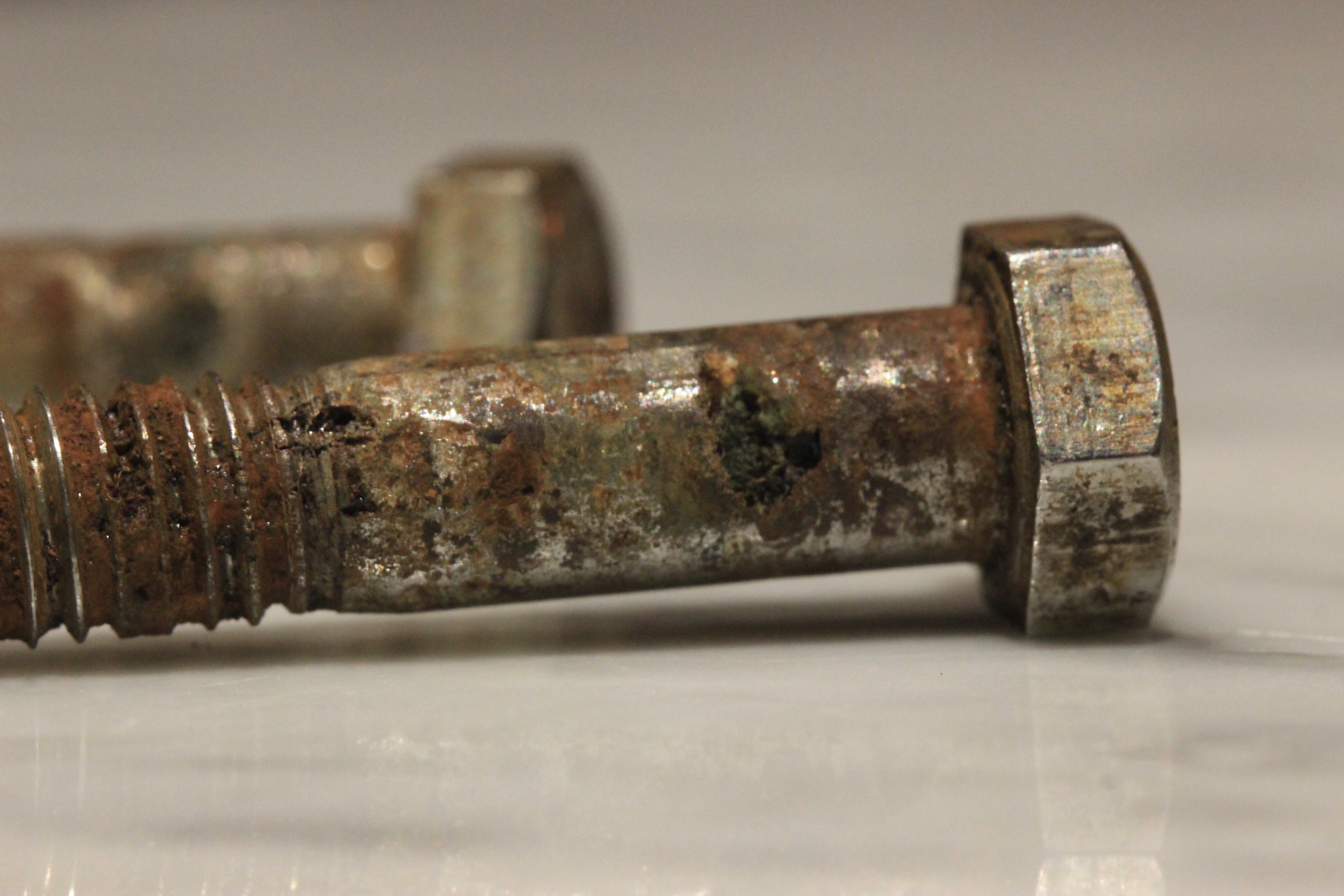
Crevice corrosion on one of the bolts for the backstay chainplate. Leaks can destroy your boat’s hardware and rigging – a good reason to catch it before that happens!
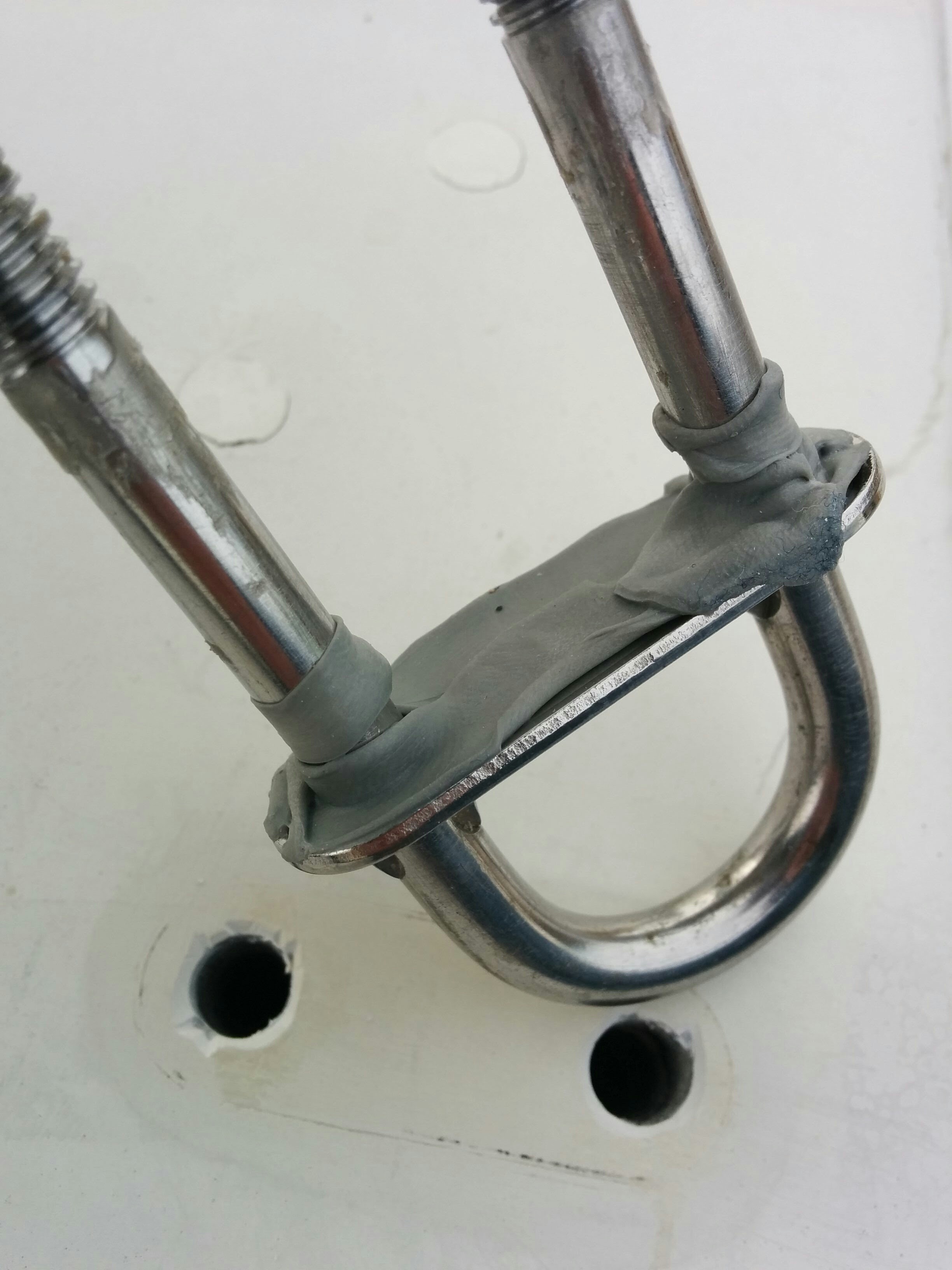
Butyl taping a U-bolt.
Why Should I Care About This?
I must be crazy to do rebedding during Seattle’s rainy season right? It started raining after Thanksgiving and I’d only be slightly exaggerating to say it hasn’t let up since! We’ve had about 60 days now with rain nearly every day – sometimes 1 or 2 days per week the sun comes out, but rain was often in the forecast, and it’s not easy to predict when the few dry days will be. In 10 years living in Seattle, this is the wettest, darkest winter I can remember. This makes rebedding and drying out deck holes extra difficult.
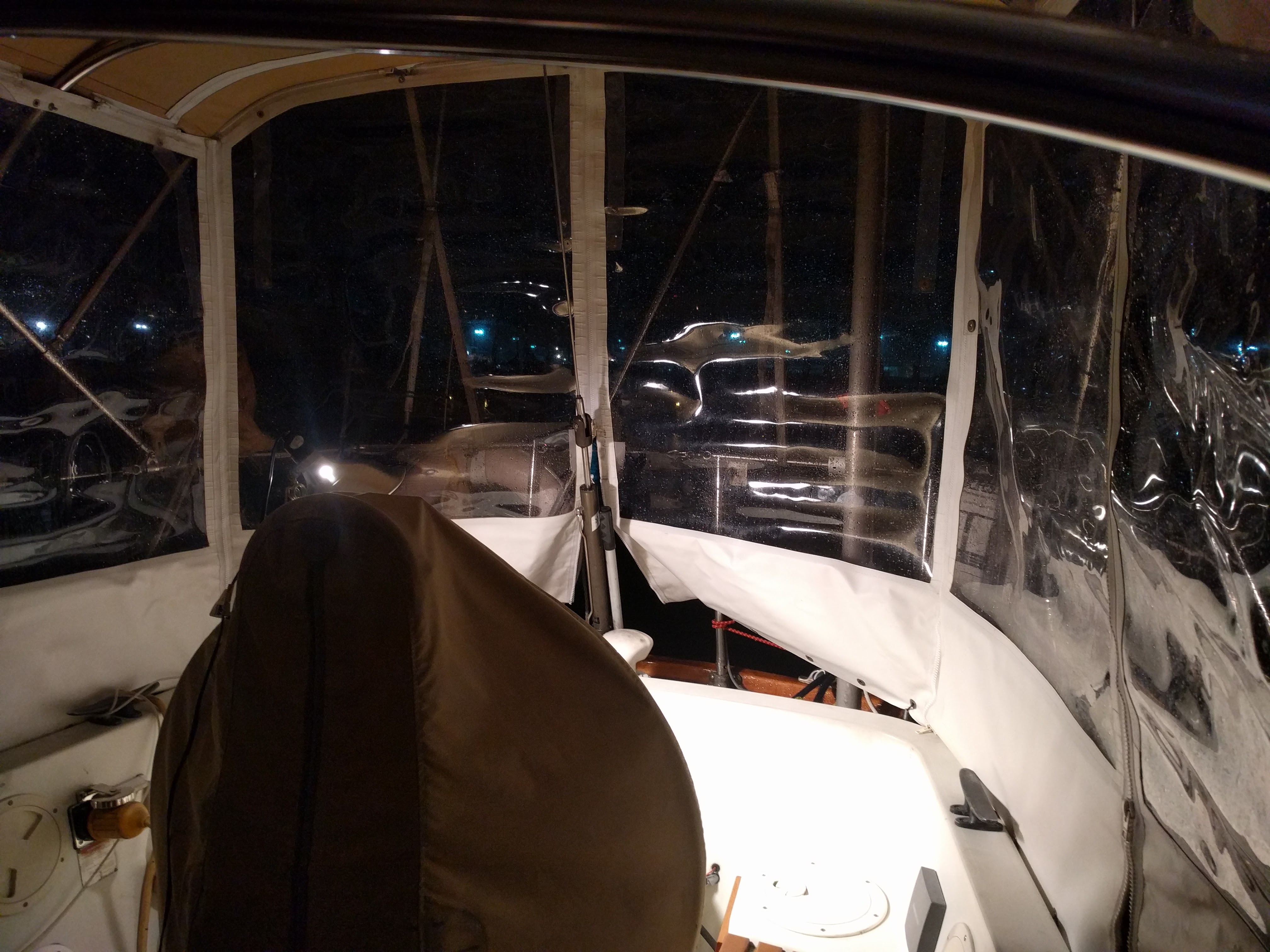
A full cockpit enclosure makes winter projects in the rain much easier!
But there are three reasons I’m doing this now: 1) I’d rather do work in the rainy season than do it in place of sailing time during the nice weather, 2) It’s important to do asap, and some leaks I didn’t discover until the rainy season, 3) Rain makes it easy to test whether you did the rebedding right – you find out quickly if you didn’t!
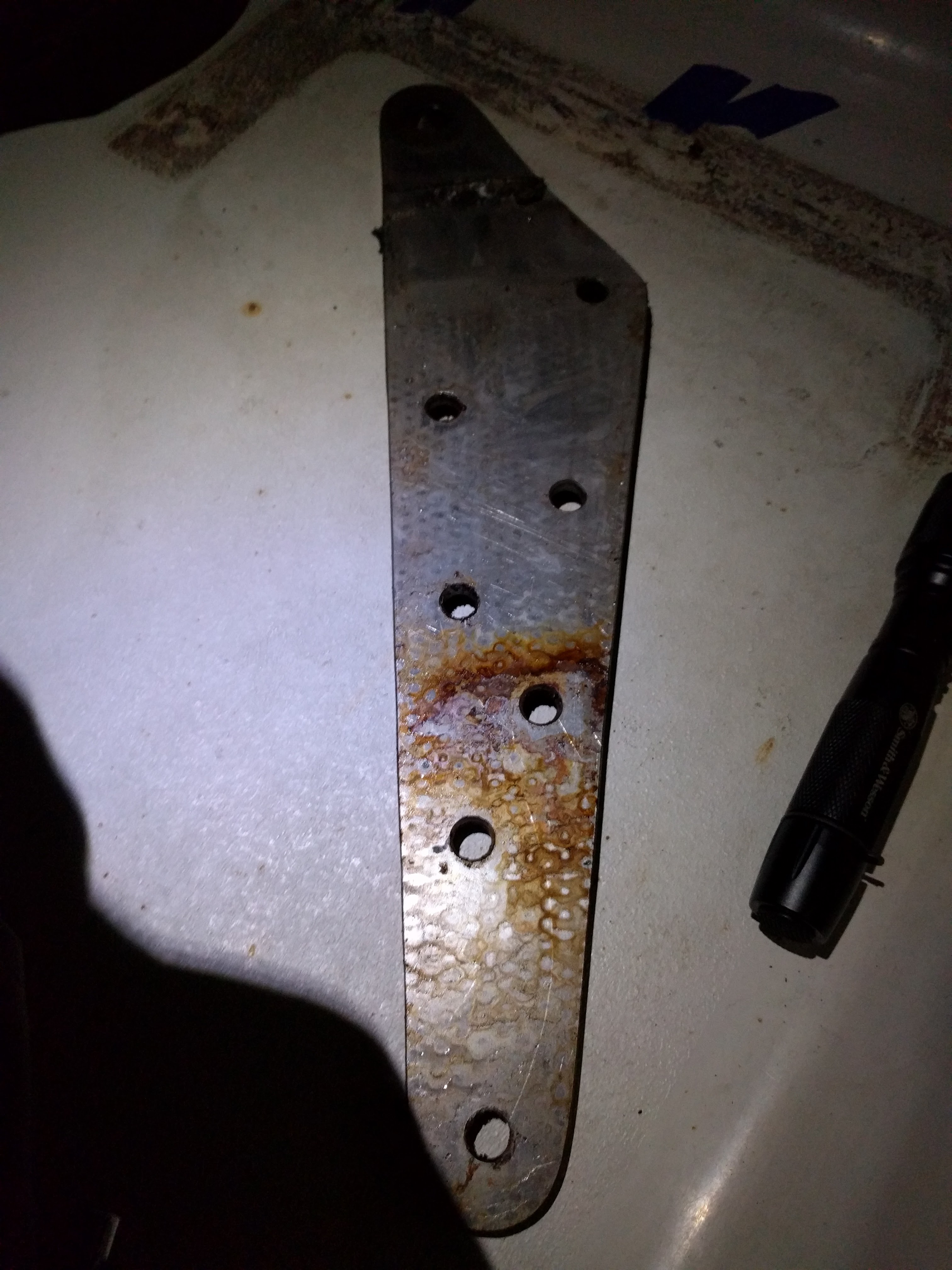
The backstay chainplate with some minor staining – it cleaned up pretty well with some mineral spirits and a brush
Any hull / deck penetrations exposed to water are a potential issue, even the 100% fiberglass ones – the photo above shows our backstay chainplate which goes through a fully fiberglassed area of the deck, but dripping water over probably many years had started to corrode the thru bolts. But cored areas are of particular concern because wooden coring eventually goes rotten and is really difficult to fix once that happens.
How to Find Cored Locations (on any boat):
Often you can find coring by observing the lay of the deck or hull from the inside. You may need to remove cabin headliners or poke your head in cabinets and lazarettes.
If the deck underside near the toerail slopes down when you get 2-3” away from the toerail, it’s sloping down in order to fit the coring they installed in the middle of the deck. If the hull has a panel that is raised ½” or so from the rest of that hull section, then that area is cored.
Of course, you can always drill or pull hardware to figure it out, but non-invasive detective work is often better.
A telltale way to find leaks below is to look for rusted thru-bolts.
What Wet Core Looks Like & Whether To Freak Out
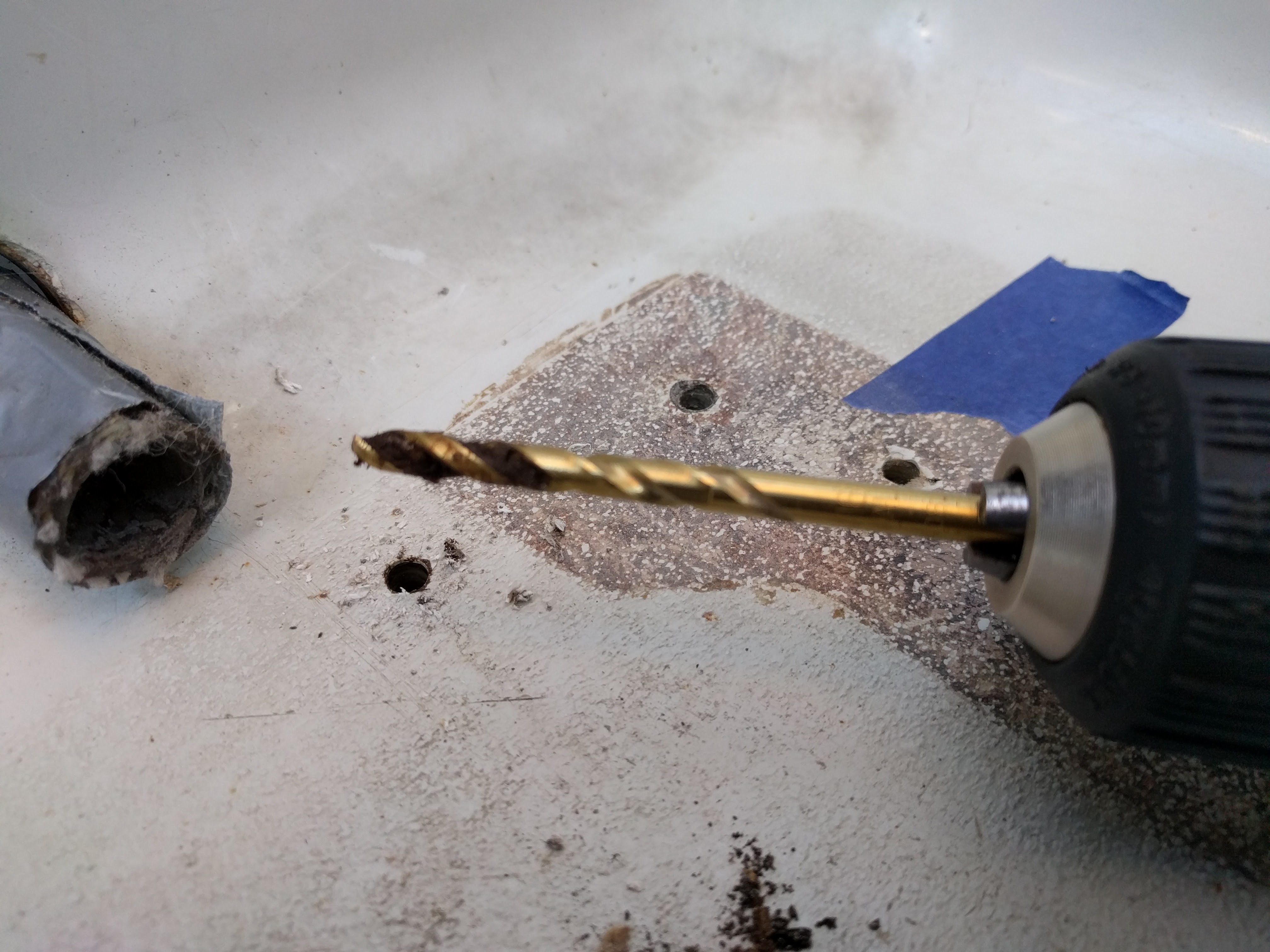
This is what wet core looks like
I used to think wet decks are a really bad thing – basically the end of the world. From reading guides on buying boats, it sounded like one of the worst things you could find in a survey – something that would surely nix the deal.
Later I learned there are degrees. In reality all boats older than 20 years have some wet penetrations most likely. A one inch section of wet balsa around a thru bolt is much different from an entire deck of rotted wood. There are also degrees to how far gone the wood is – when wood gets wet, it doesn’t just instantly lose its integrity – that may take years of getting wet a little bit at a time.
Our purchase survey found no issues via percussive sounding, and positively identified 2 sets of deck hardware that were leaking. But there were other areas not identified which I only found later through close scrutiny (the backstay, anchor locker lid hinge, and cockpit holes for the propane locker base). I think this is pretty normal for a survey – boats have subtle leaks which even an owner can miss for years if they don’t put attention towards finding them.
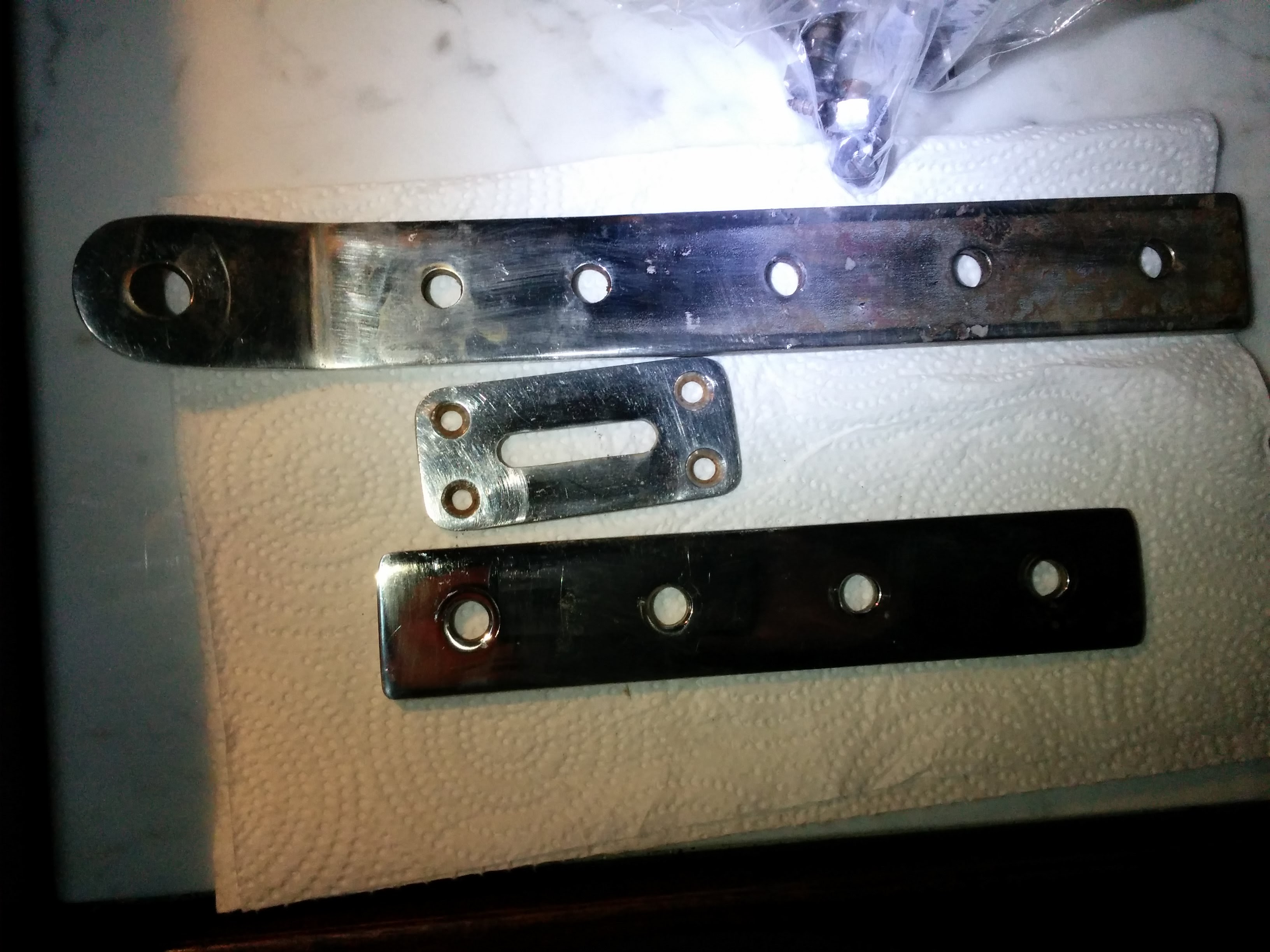
The solent stay chainplate was leaking, but cleaned up pretty well.
Cored Locations on a 1984 C&C Landfall 38
I’ve organized this into deck + hull sections, and highlighted sections that had screws driven into coring (because screws in core are particularly evil!).
- Deck:
- Most of the deck, up to about 2” of the hull-deck joint (toerail).
- Deck fills (1 diesel, 1 waste, 3 water) – most of these were leaking, and this was identified in the purchase survey. Deck fills were mounted with screws, except waste + diesel which were probably replaced with thru-bolts by a prior owner.
- 1” section of deck on port bow that the anchor locker lid screws are driven into (on models with the piano hinge style locker, after about 1982). About 20 screws in a very wet area. Most had moisture and deterioration (fortunately hadn’t spread).
- Chain guard (teak plate, but on some boats it might be metal) aft of the stemhead, fore of the anchor locker. Likely screws driven into core (haven’t confirmed yet).
- Cockpit floor. Screws driven into coring for the wood bases that position the propane locker. The propane locker may not have been original on all boats, but it looks like this was factory installed – but the installer did a bad job and mis-drilled about half the holes. He didn’t use those holes and then redrilled in the location he needed, but didn’t bother to fill the unused holes!
This is a pretty wet area where water pools in the cockpit. The wood base was actually sealed pretty well – some of the holes were still dry after all these years – but the main problem was one of the misdrilled holes was outside of the area covered by the wood – ie, an open hole into coring in the cockpit! The only reason it wasn’t easy to spot is that dirt and wood had accumulated, making it look like a plugged / patched hole. And it was small – only ⅛”. - Raised hardware areas aft of mast on port and stbd sides, where winches and cleats were installed (some may have been removed on boats that converted to cockpit running rigging). These are cored with at least an inch of very tough plywood. I found no moisture in them.
- Uncored: stern deck area that backstay chainplate goes through.
- Hull:
It’s well known that the LF38 hull is cored above and below waterline. But what is often unstated is that it’s not cored everywhere. This is a pretty important omission. If hull thruhulls are installed in non-cored sections, then there’s no real difference (in terms of leaks) between this hull and a boat with a fully fiberglass hull. We only really care about coring that has penetrations.
- Uncored: forward bow below waterline where the original depth and speed transducers are installed (accessible inside from the aft v-berth access hatches).
- Uncored: stern thru-hulls for the exhaust, propane discharge, aft scupper discharge, and an unused / unknown 1.5” thru-hull (not sure what this was once used for, it may have been for a bilge blower discharge). These thru-hulls are above waterline at rest but potentially under waterline when underway.
I didn’t need to pull these thru-hulls to figure out they’re uncored. Looking in the stern / transom from the inside it’s easily visible that the hull is thicker in a panel shaped section on each side *except* in the region where the thru-hulls were installed. - Unknown: head and galley thruhulls. Sorry, I haven’t pulled these yet. Others (Wally from Stella Blue) have said these are cored, but I don’t know if that was only earlier model years or all years.
- Unknown (probably cored): above waterline thruhulls for bilge pump discharge, water tank vents, holding tank vent, diesel tank vent.
If you have any confirmed answers to the unknown areas above, I’d love to hear it in the comments.

Boating is an exciting hobby.
Thanks for the insight. Had a Carver with balsa core hull and was diligent about rebidding the struts and thru hulls every few years